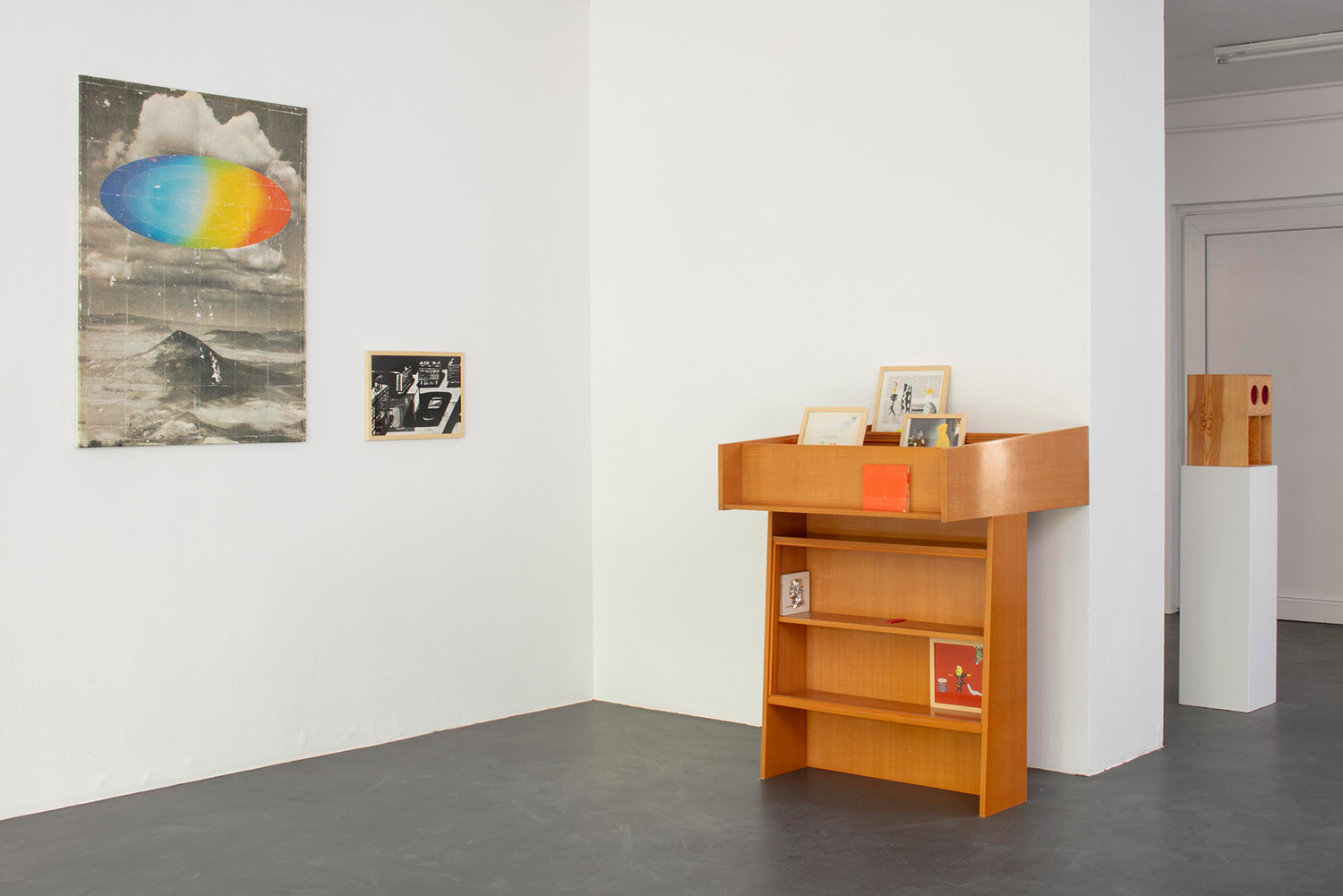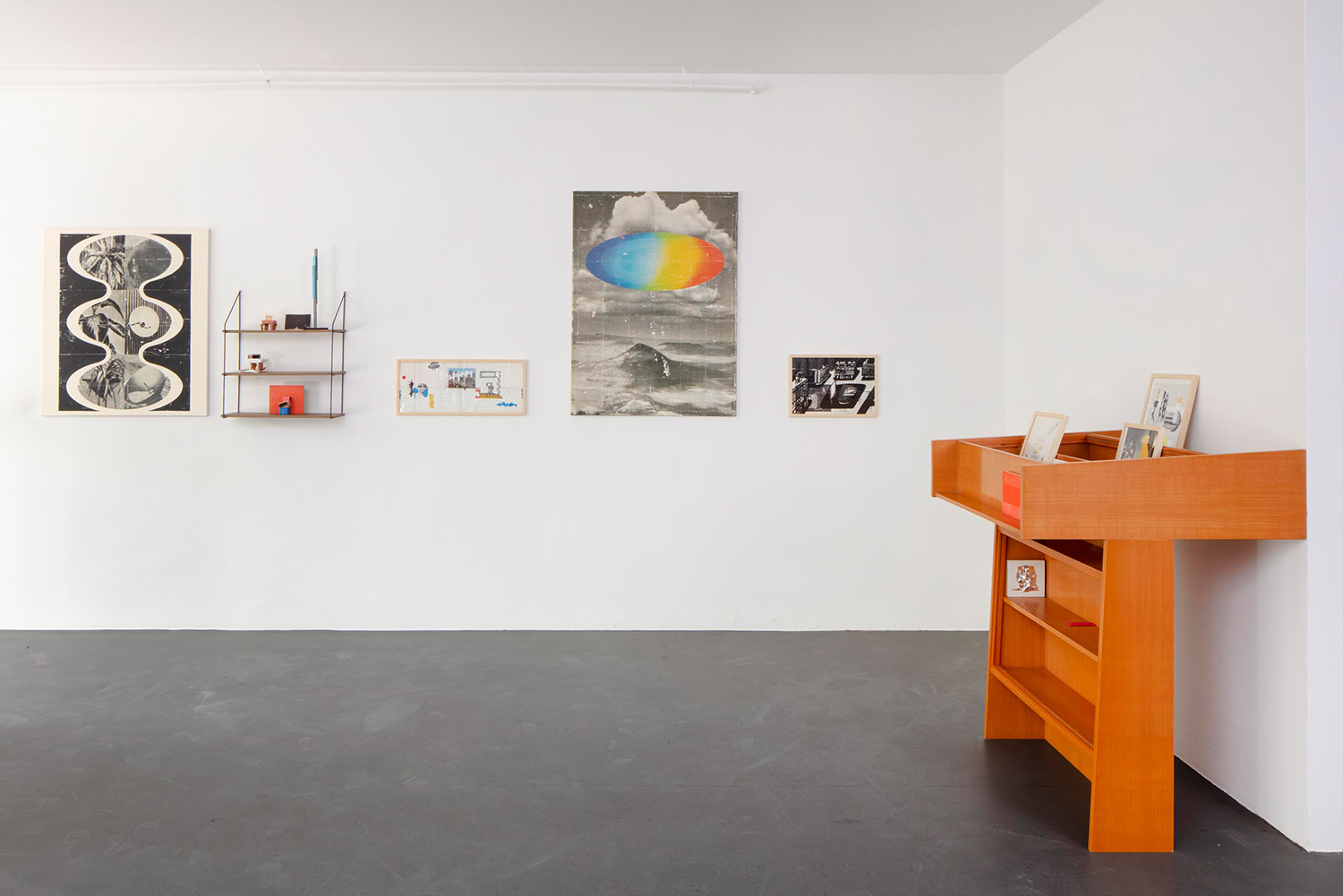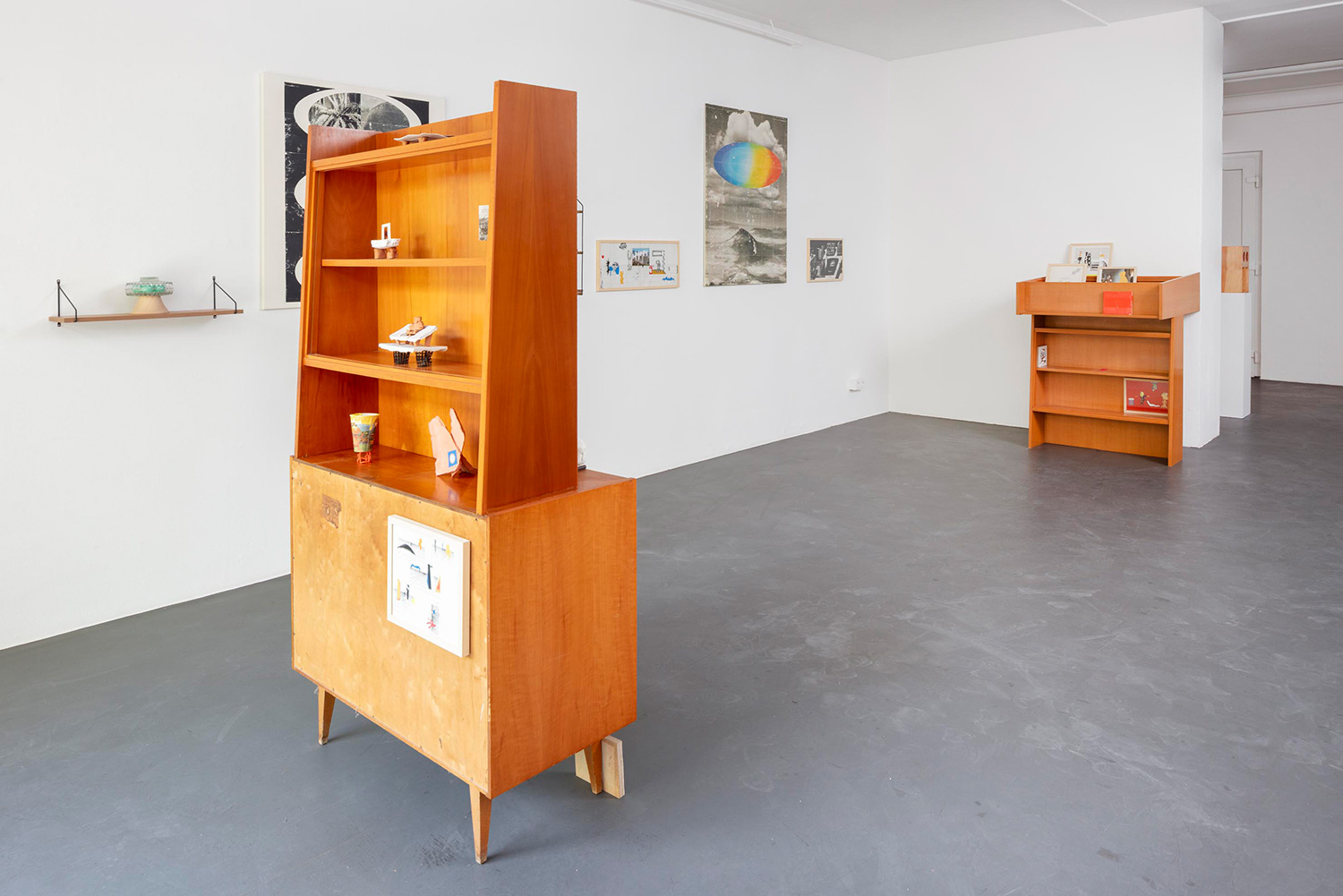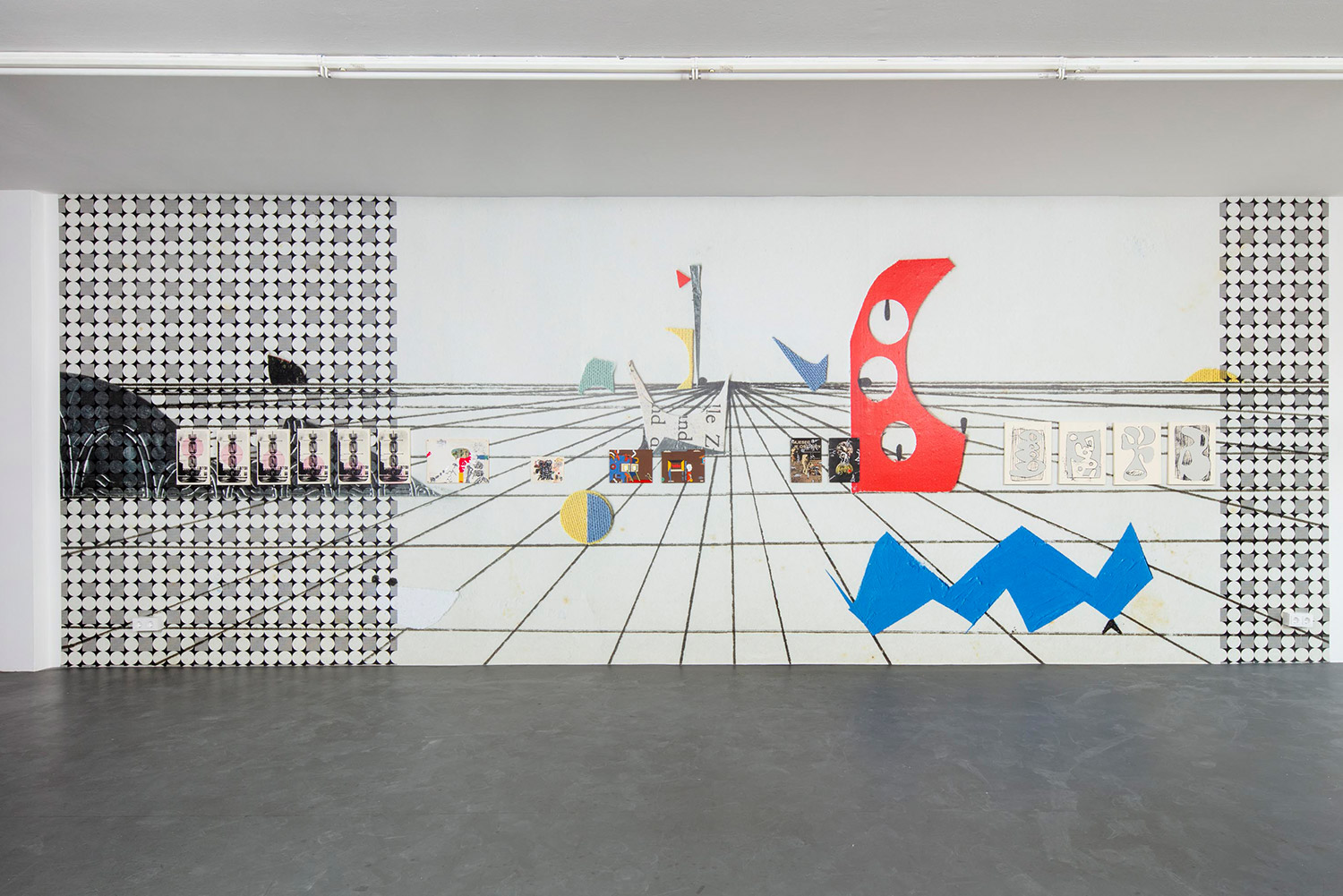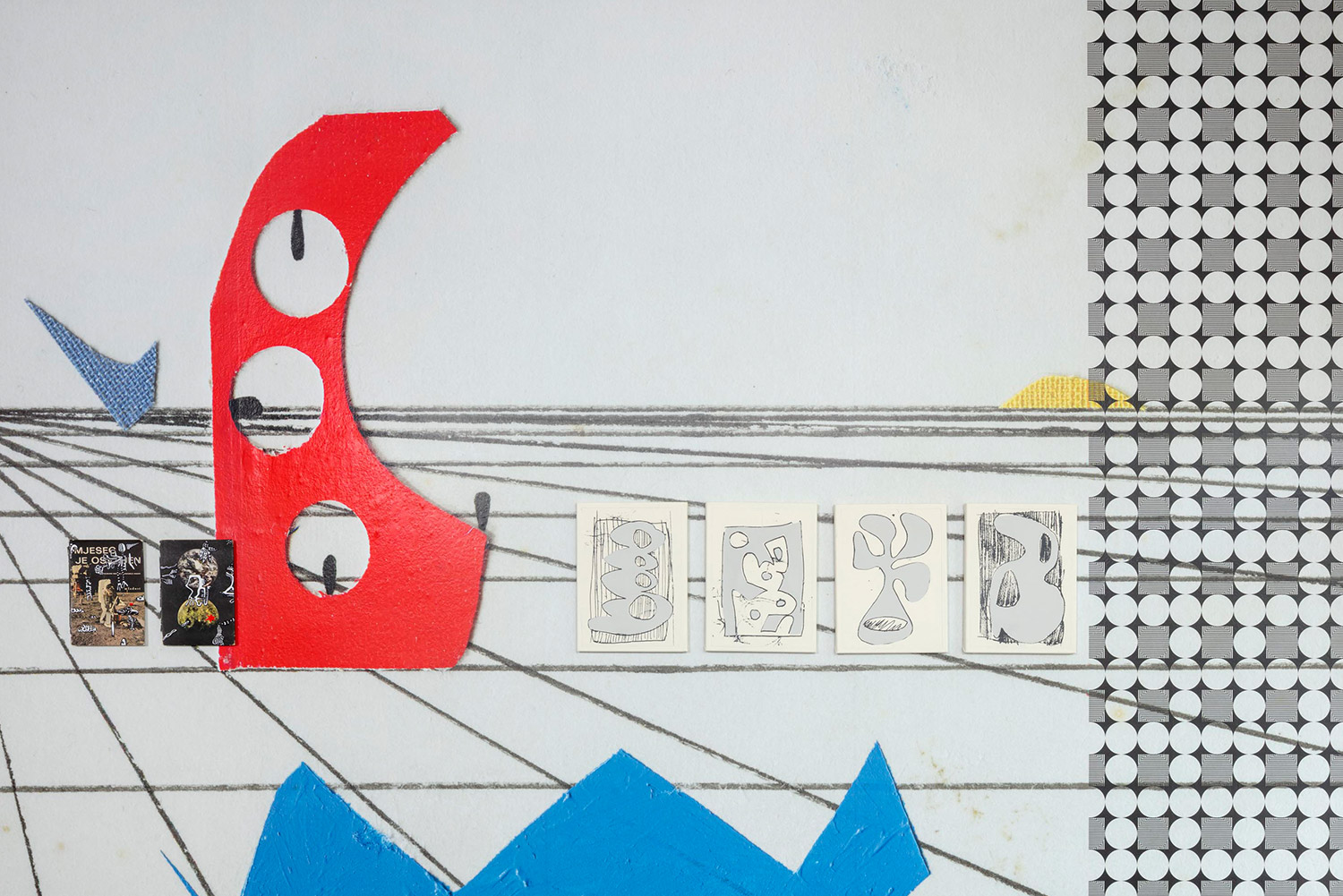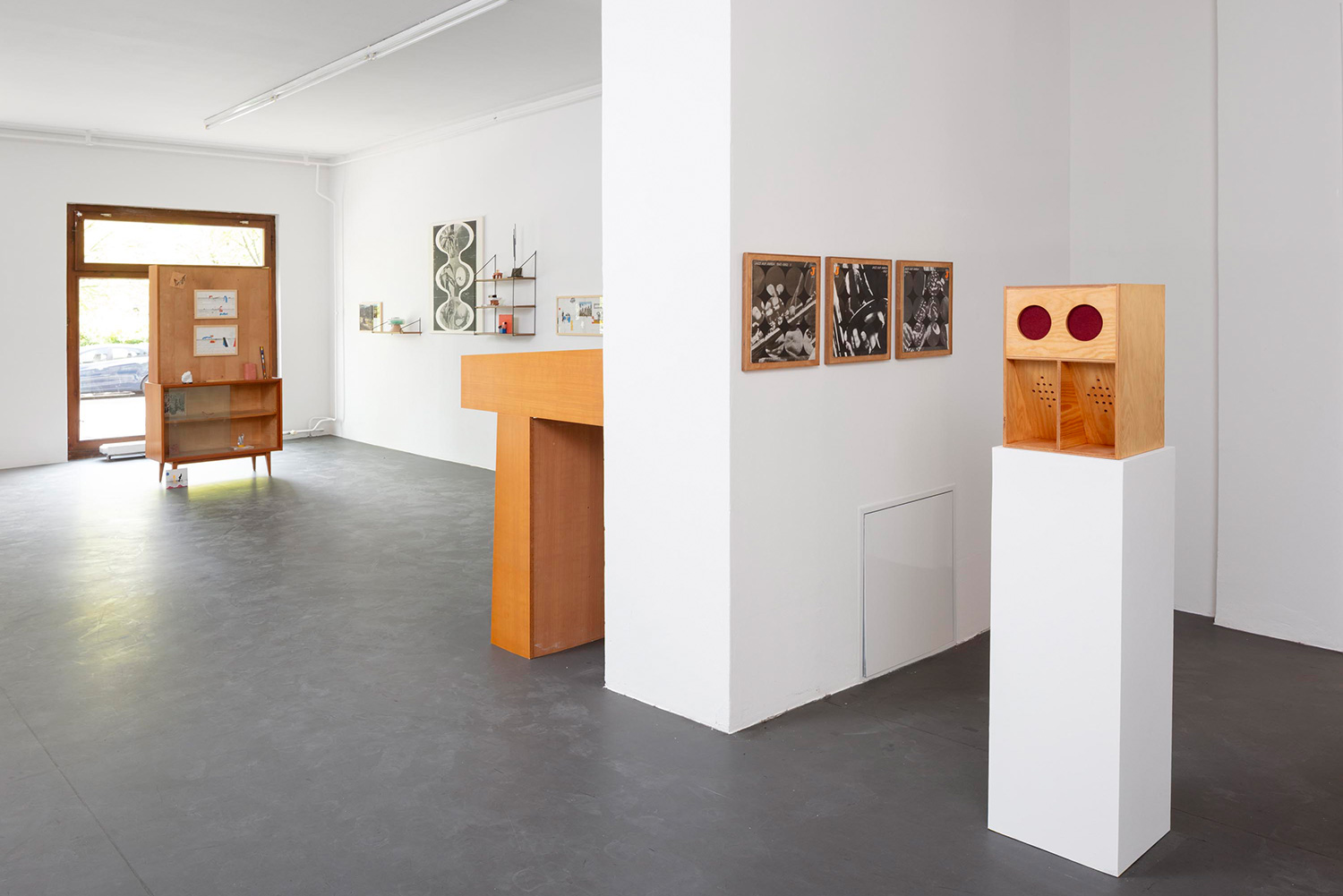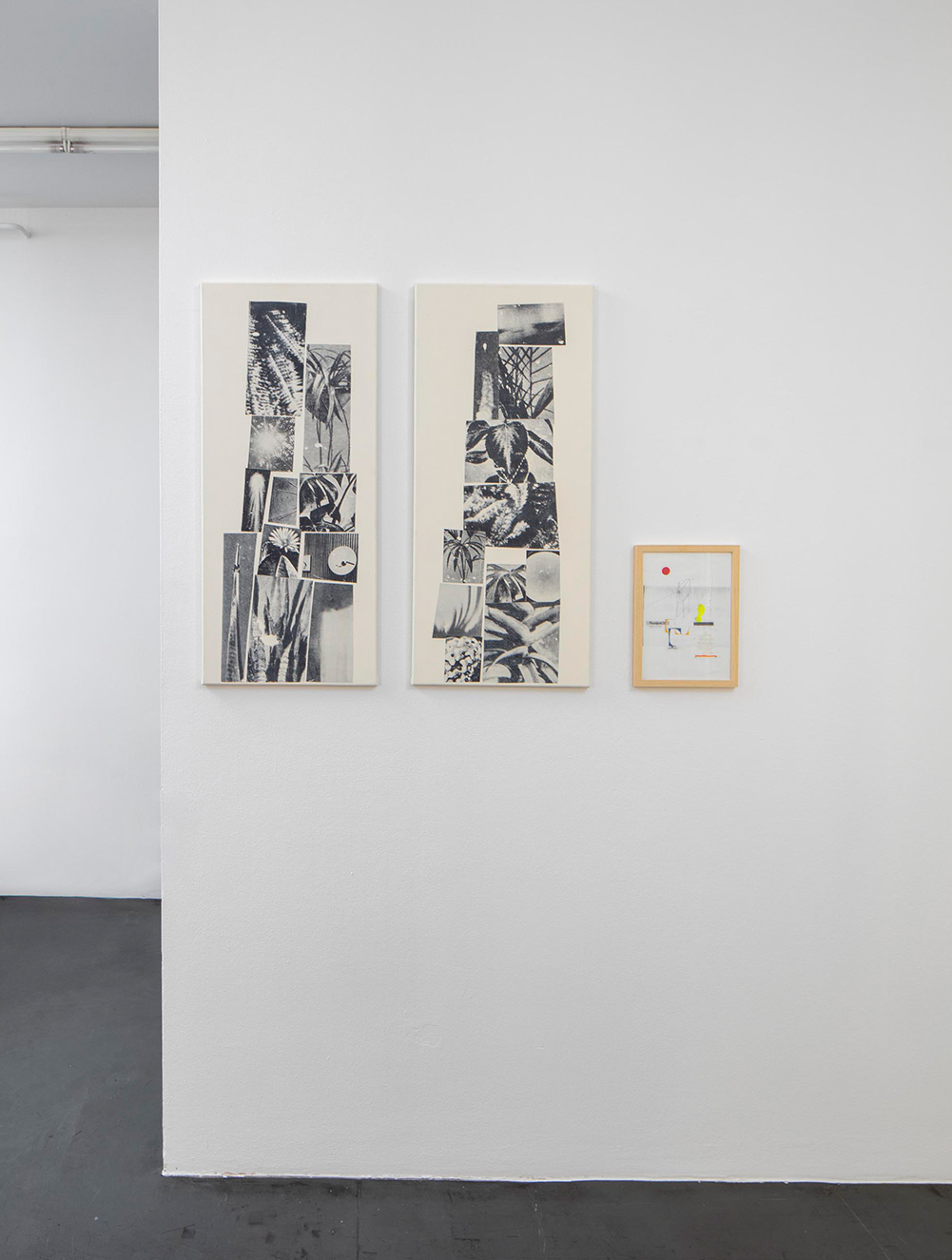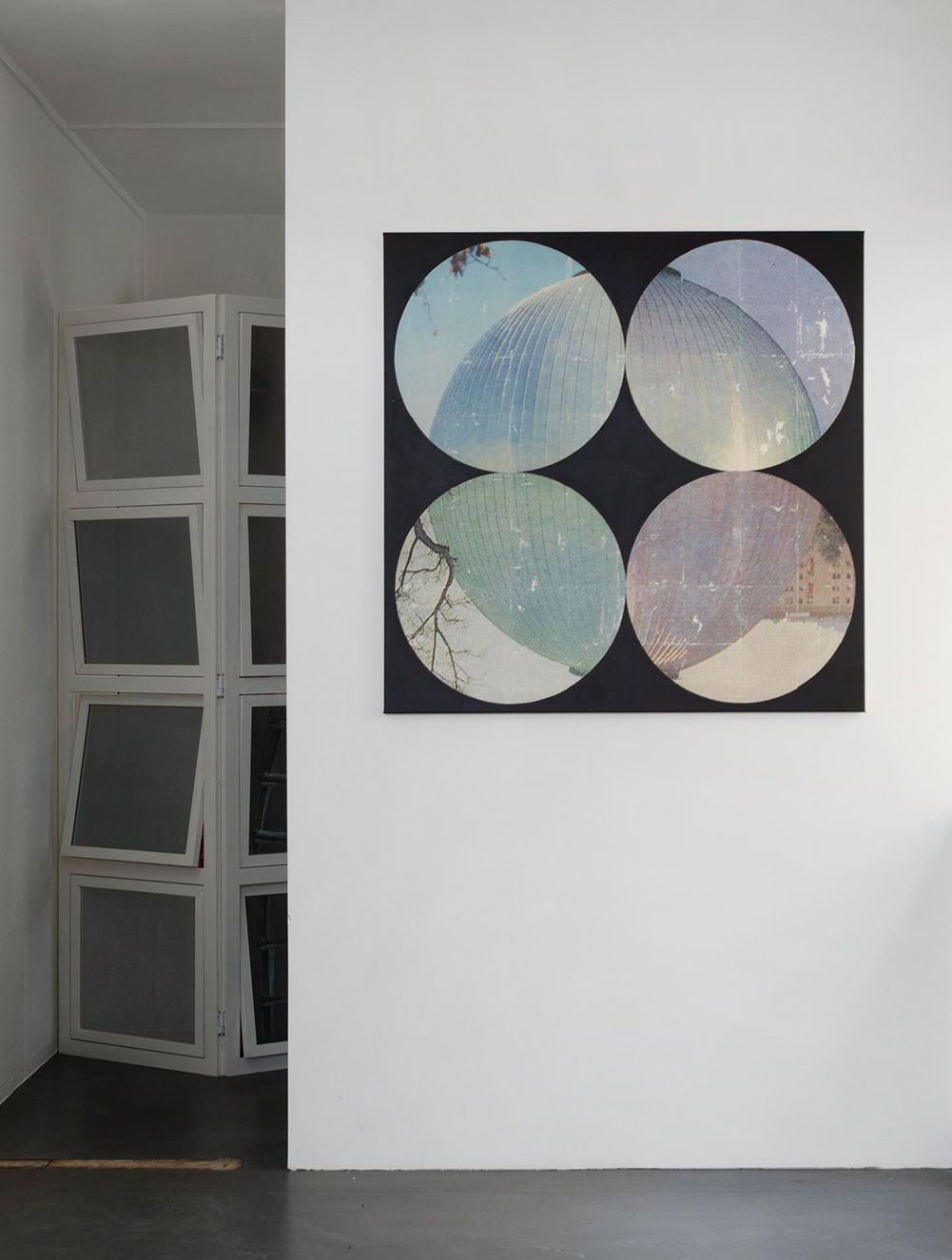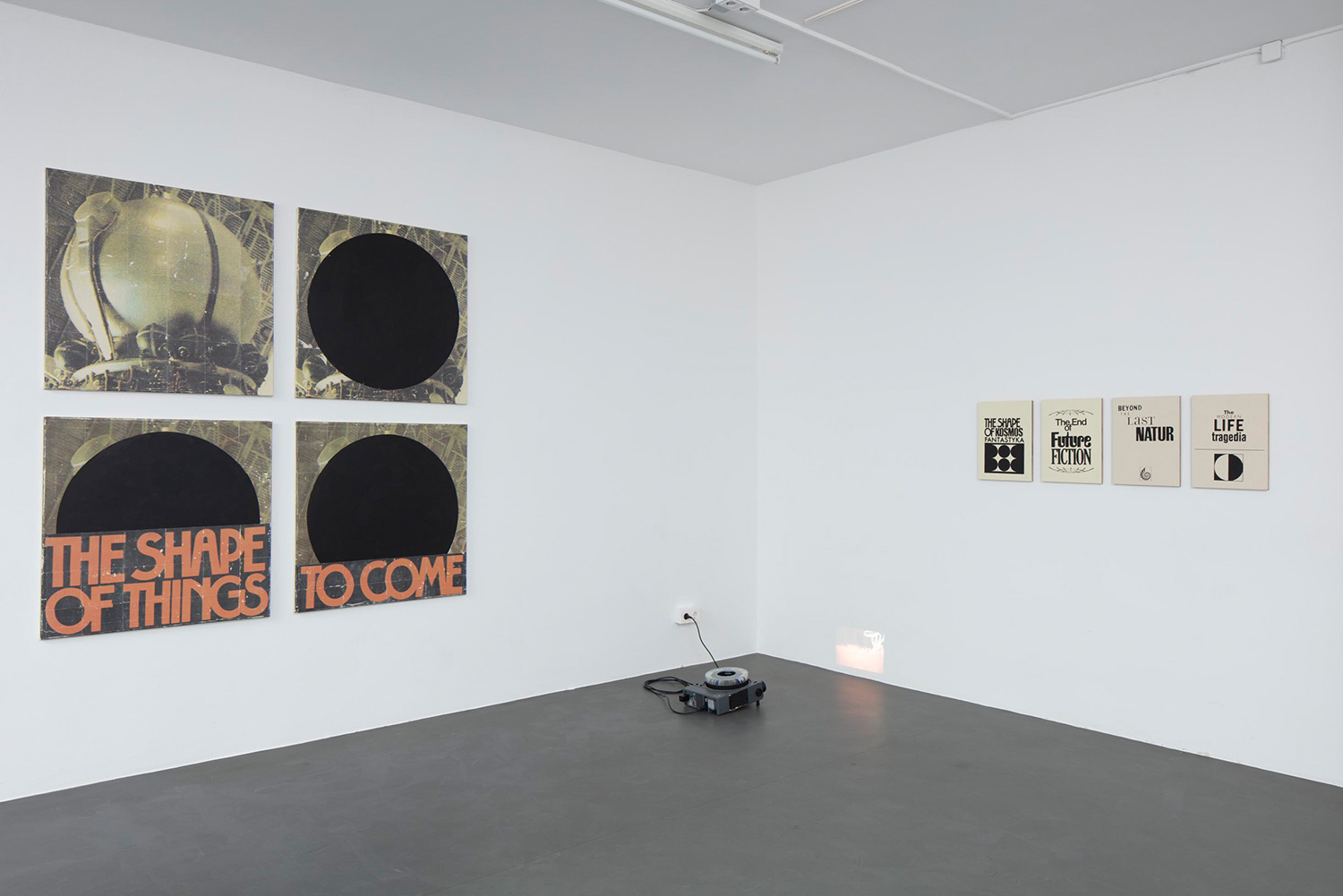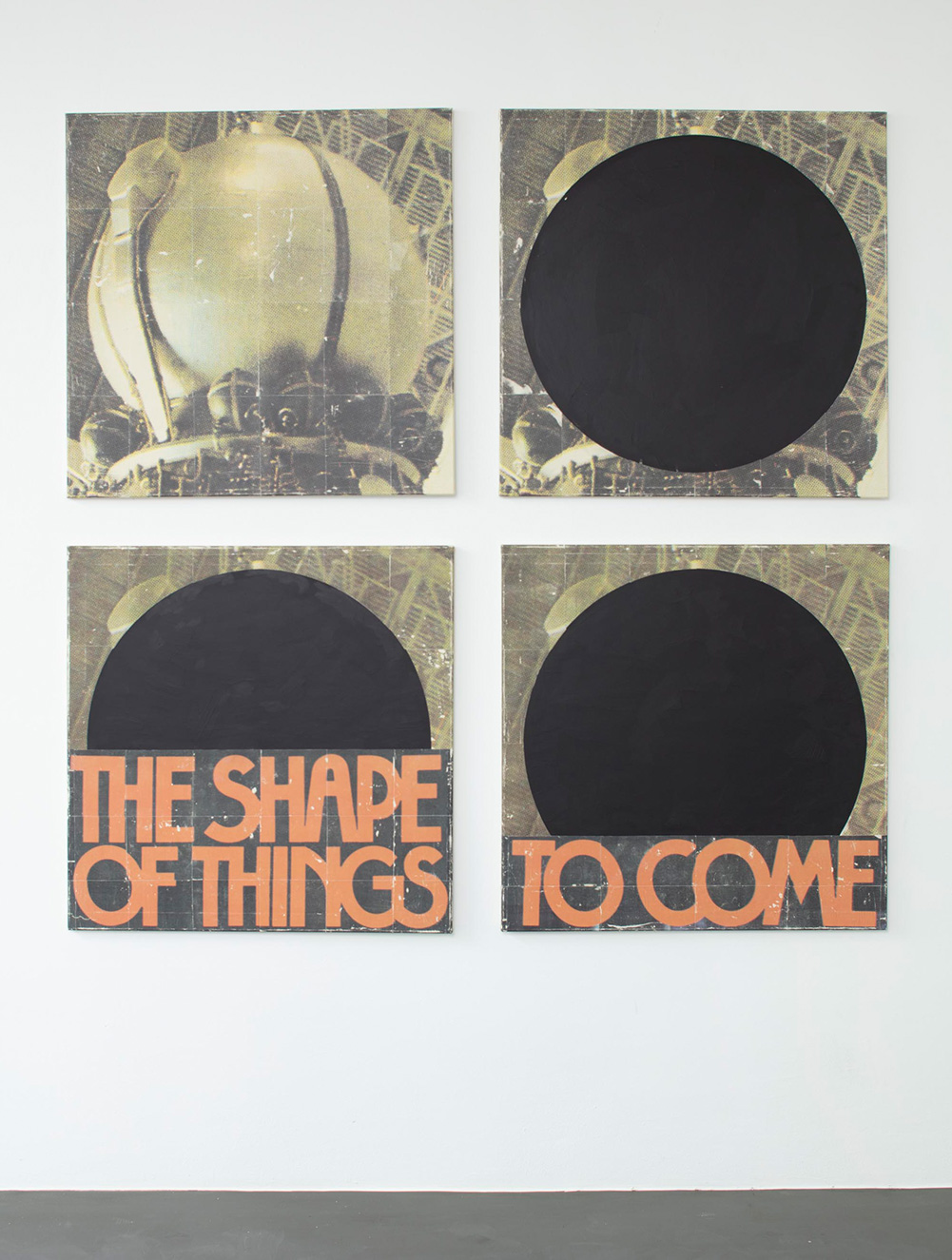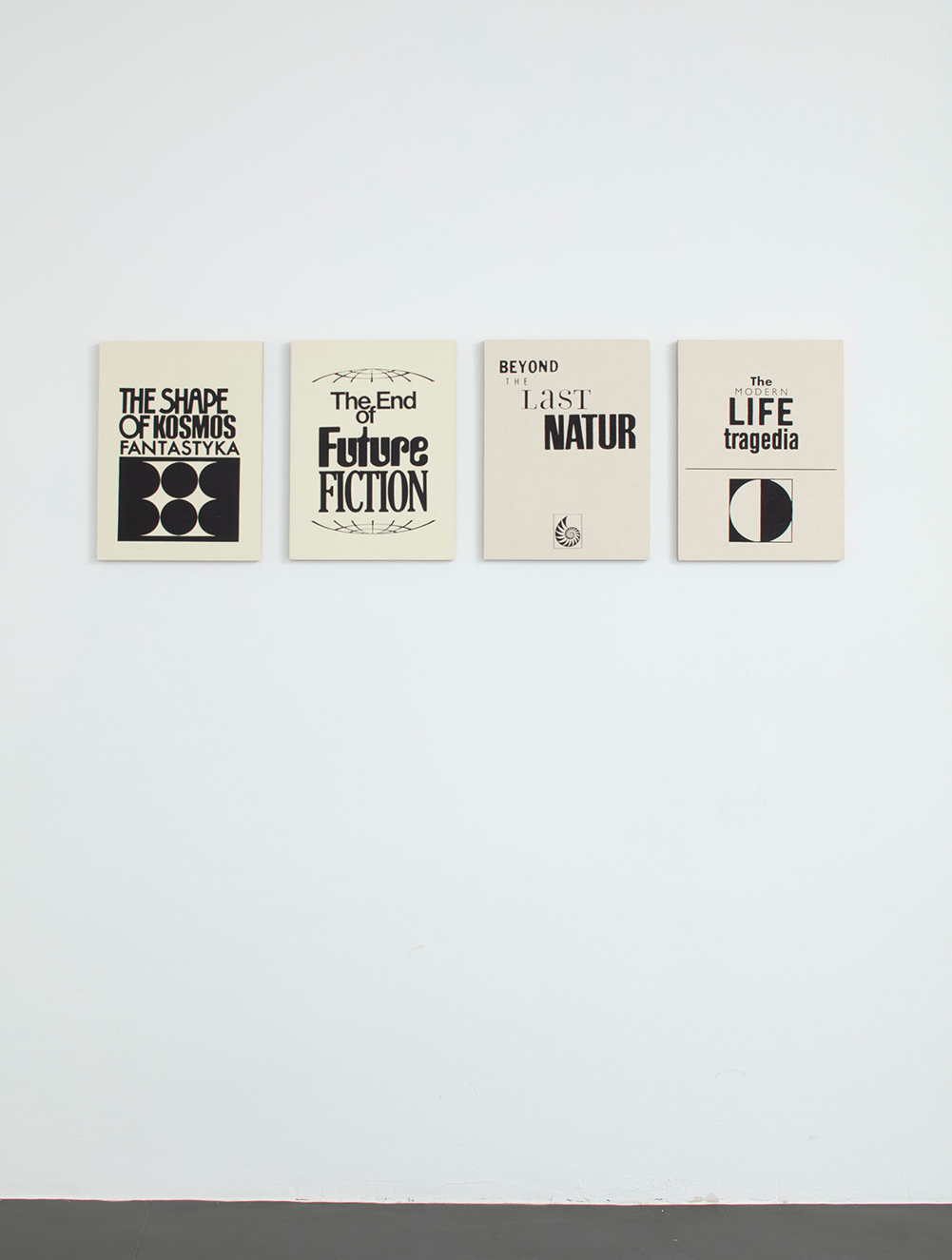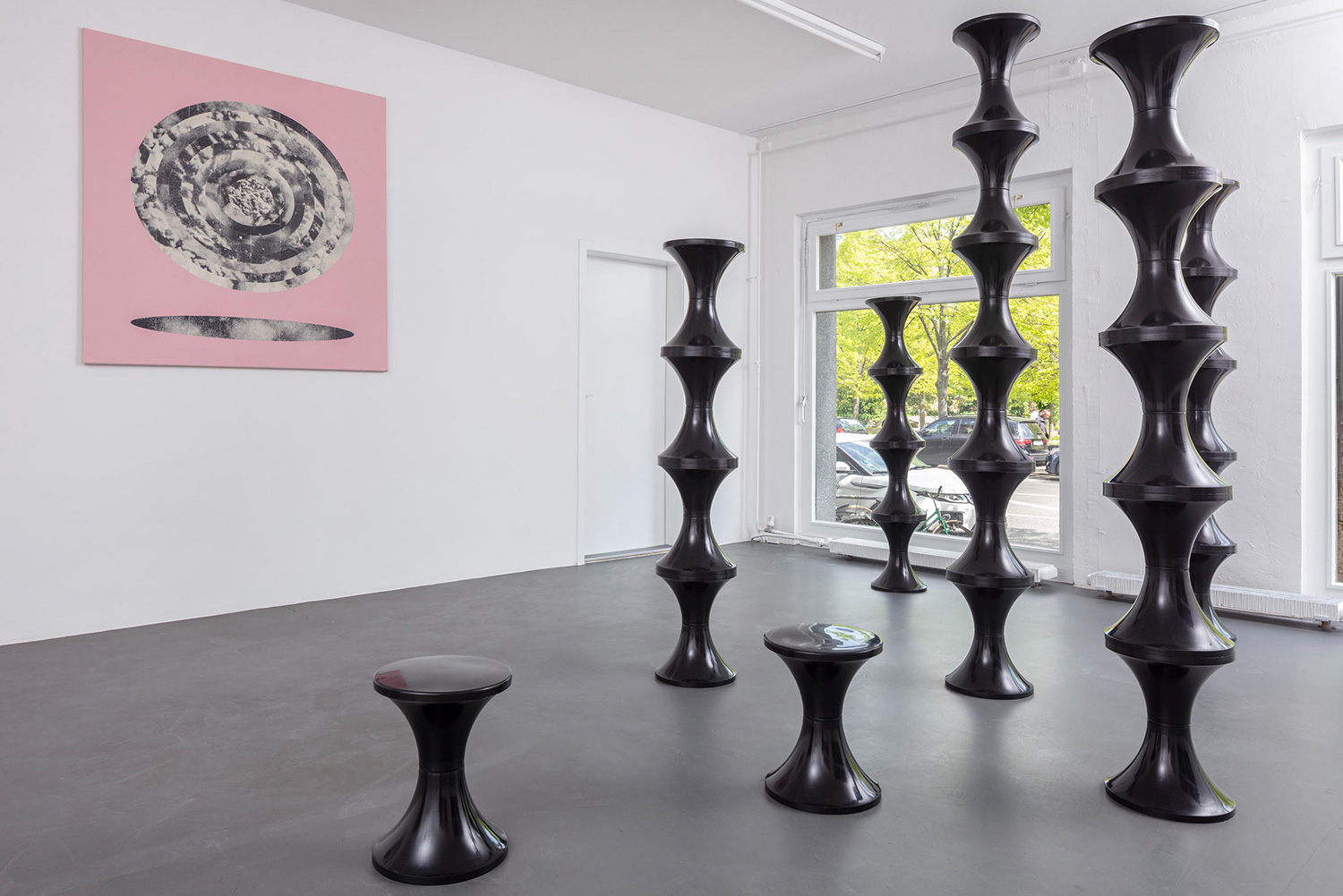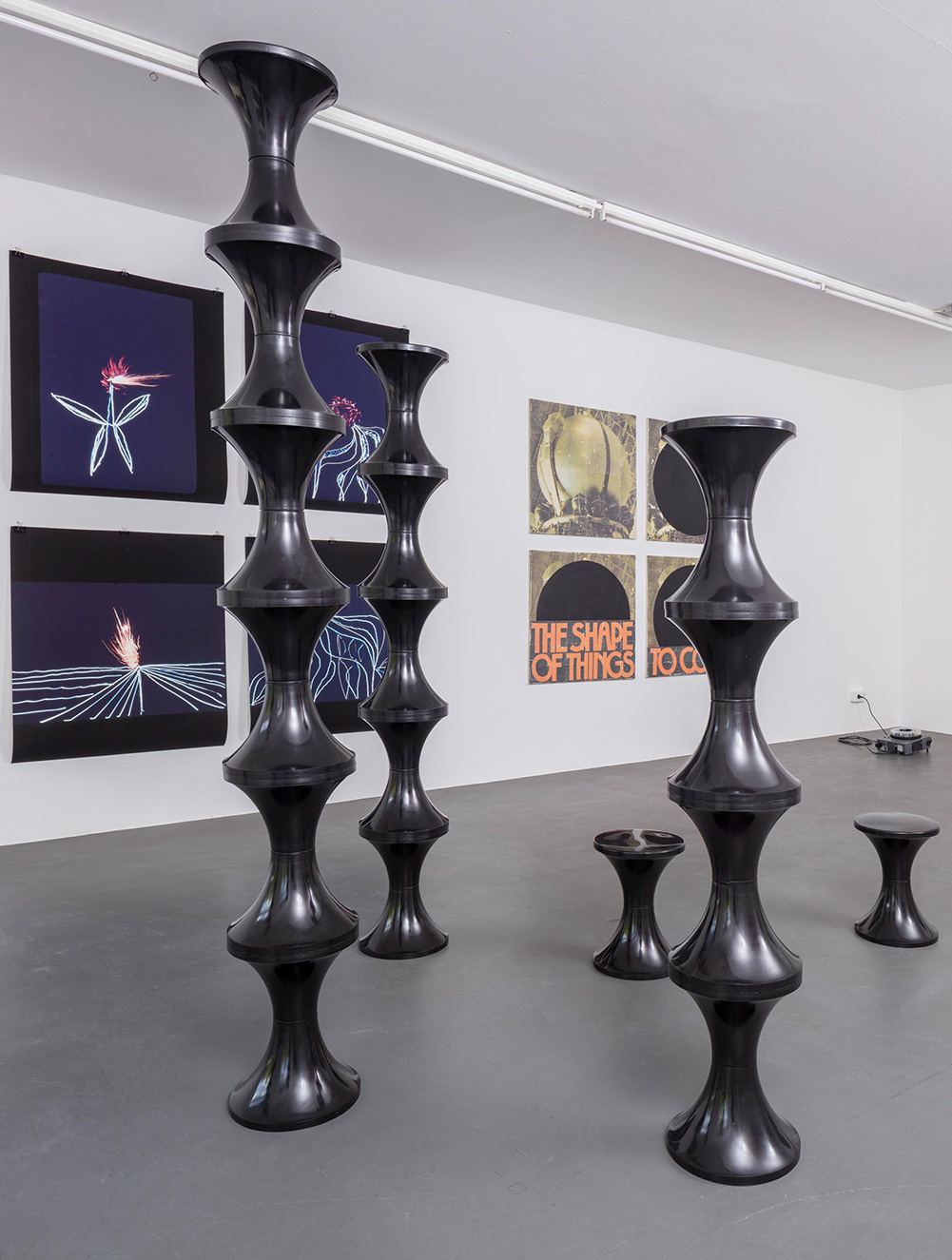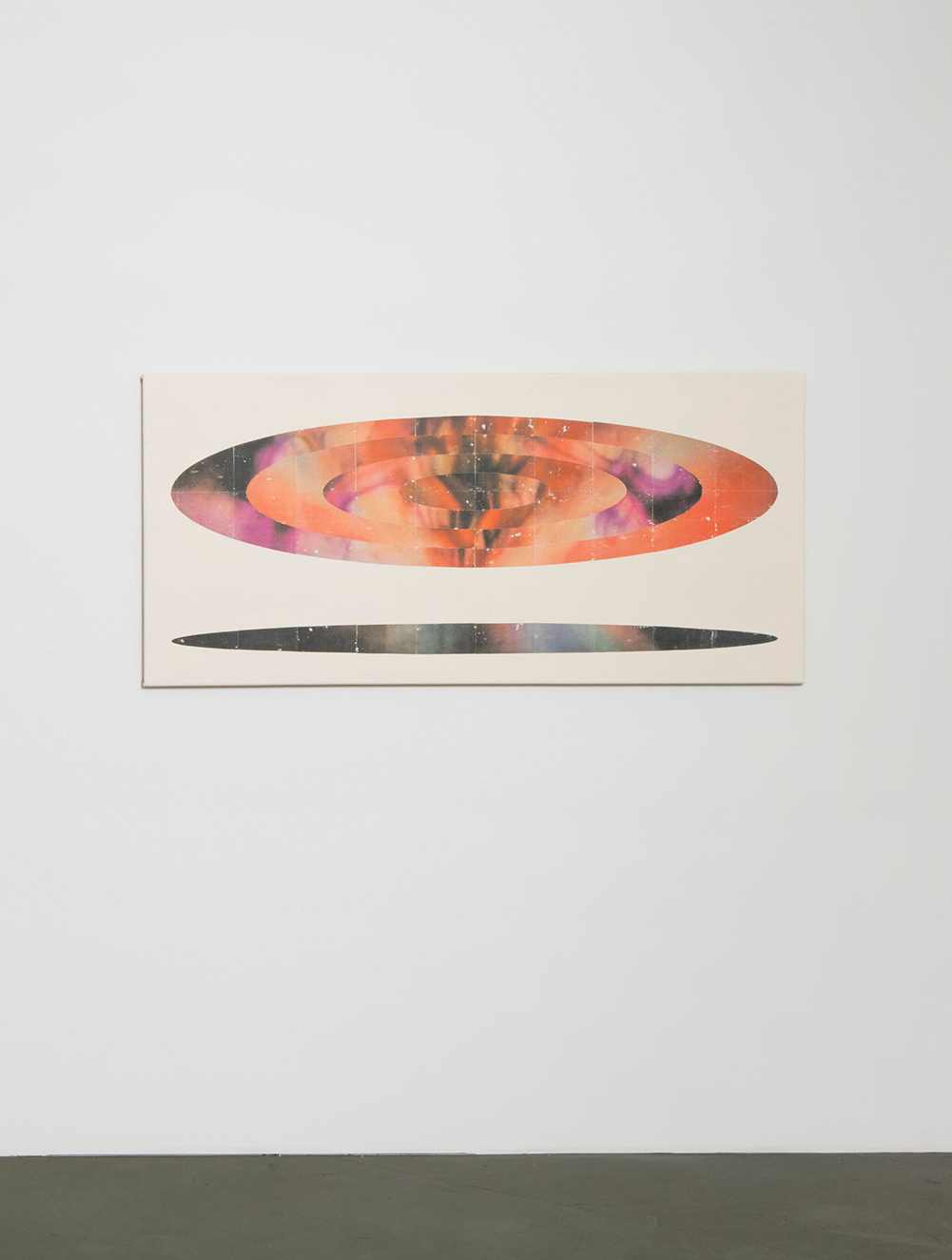MARK FRIDVALSZKI
Against this specific background, Mark Fridvalszki and Marko Tadić created an intense staging that combines their works – a mix of wall installations, paintings, prints, drawings, models, archival objects, and sound – into a reflection on the potential and limits of utopian thinking. The artists, originally from the former socialist countries of Hungary and Yugoslavia, have long been concerned with how visions of a better world gradually break down but continue to live on in small fragments and objects within our everyday reality. These fragments now exist somewhere between nostalgia and the future.
The exhibition taps into these ideas and uses the prefab building itself as a symbol for these broken dreams: a building that has witnessed radical changes – from the ideological struggles of the 20th century to the urban transformations of modern Berlin. It is not only about aesthetic engagement but also about examining utopias as grand social visions developed in response to the discomfort of the present, as described by Lyman Tower Sargent and others.
As part of this exhibition, the ’Schaufenster’, a separate display window, is activated by a a loan from the collection of the Museum Utopia und Alltag in Eisenhüttenstadt – a former neon sign of the GDR travel agency in Jena in the form of a stylised globe. This historical piece is complemented by a wallpaper and ornamental window foil designed by Fridvalszki and Tadić, thus adding another dimension to the question of the material remains of failed utopias.
The reuse of found images, objects, and displays also gives the exhibition an ecological dimension and emphasizes sustainable resource use – an approach that not only reflects on unfulfilled utopian dreams but also attempts to develop new ideas for the future from their remnants. Despite their failure, their importance for social change remains unbroken. Through artistic collaboration, a dynamic installation is created that understands failure creatively and conveys how radically different futures could look. Ideally, it will offer visitors impulses by pointing to models of how societies react to crises and develop visionary solutions.
With this exhibition, the participating artists approach themes of media archaeology from different perspectives. In Tadić’s models an images, the world manifests as a kind of miniature stage. It is not so much a world made of things but of machines that have shown them or through which they appeared: cinema, museums, exhibitions, postcards, etc. Fridvalszki counters this with his expansive wall installations. Music serves as an interplanetary common language – similar to Steven Spielberg’s naive futuristic film Close Encounters of the Third Kind (1977). This exhibition plays with the concept of ’’UFO Modernism’’ – the idea of preparing for a higher state of consciousness and leaving behind humanity’s animalistic side.
Although Fridvalszki and Tadić pursue visually different approaches, the message remains the same: it is about the idea of collectivism and the potential of an uncertain future. The unifying element of their work is the appropriation of everyday images from the past to question aesthetic phenomena under contemporary conditions.
This virtually echoes in the newly composed, all embracing composition by Àbáse and Ziggy Zeitgeist. Playful images and elements such as climbing frames or playgrounds set the tone for this vision. It is about reactivating the spirits of past subcultures, from ’68 to ’89, emphasizing solidarity and the ’’we’’ rather than the ’’I.’’ In that sense a jazz band symbolizes the most democratic form of collective work: playful, creative, spiritual, and emotional at the same time.
